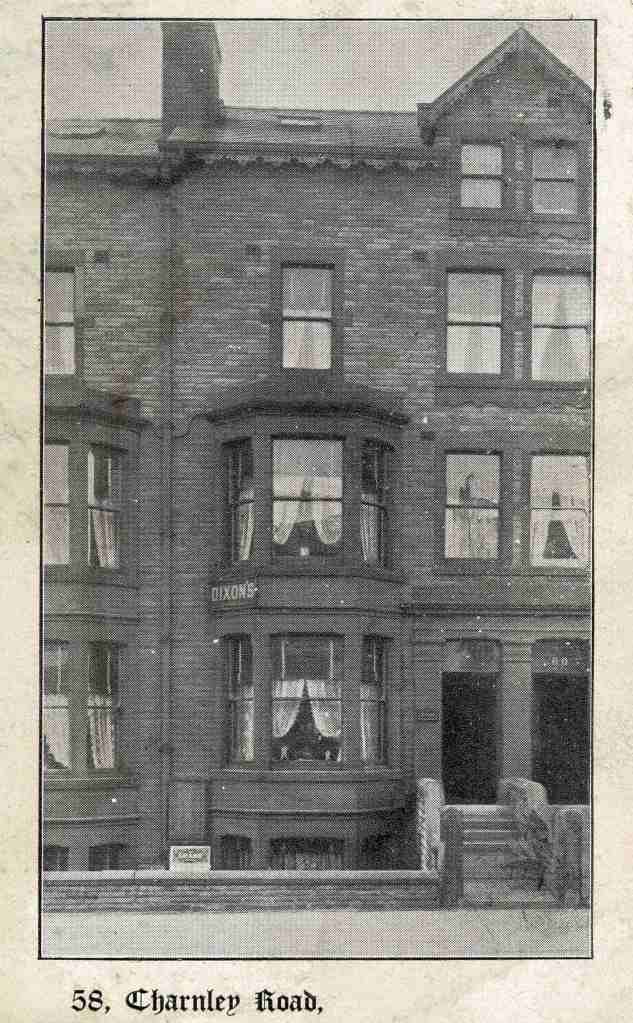
I decided to research another Blackpool postcard for this week’s ‘Our House’ blog. I seem to have developed quite a thing for Blackpool’s boarding houses. The picture displayed on the front of the postcard is Mrs Dixon’s boarding house, which was situated at 58 Charnley Road.
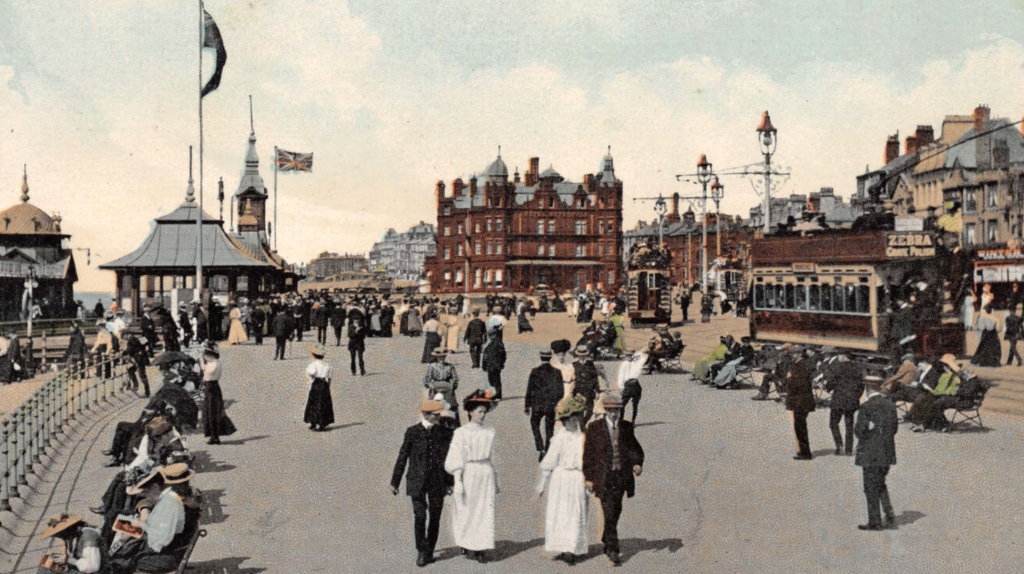
The Dixons took over the house in 1900, by then Blackpool had already established itself as a seaside resort attracting mill workers from across the North West. From the 1870s onwards, several aligning factors made resorts such as Blackpool accessible for working-class holidaymakers. A rise in real wages meant that workers could spend extra resources on leisure activities such as holidays. This was helped by local savings clubs, which enabled workers to put a bit aside each week for a day trip or excursion to the seaside. As historian John Walton suggests, these cheap excursions were usually organised by Sunday schools, temperance societies, employers or commercial promotors such as Thomas Cook. Also during this period, people were permitted by their employer to take more time off work without facing the sack. Workers were not paid when they were off; therefore, many could only afford a long weekend, however, those better-off workers could take a whole week off.
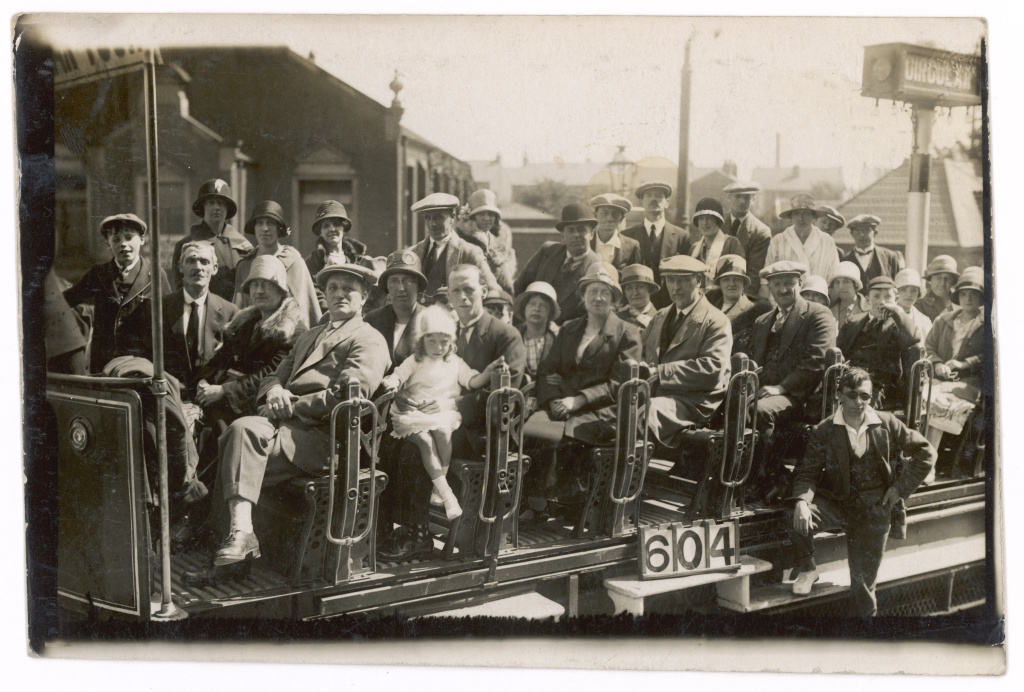
Alongside tourists, the growing resort also attracted those that came to seek new employment opportunities like Thomas Dixon and his wife Jane. The family had moved to Blackpool from Burnley and first appear at the address on the 1901 census. With the house only being built a few years before, it is likely that they were first occupants of 58 Charnley Road.
Thomas was not employed in the boarding house business. He worked as a road labourer and later a lamplighter for Blackpool Corporation. It was Jane Dixon that managed the house whilst also caring for their young baby. At the time the 1901 census was recorded, 58 Charnley Road was a ‘company house’, it would later be called a boarding house. A Blackpool guidebook offers some definition of the different types of accommodation available to visitors in 1897…
- Hotels, Hydros and Boarding Houses: Offer inclusive rates for meals and room
- Private Apartments: Where the rate quoted was for a room, with meals cooked by a landlord or landlady using ingredients provided by the guests
- Company Houses and Lodging houses: Guests rented a room or bed and could either buy their own food to be cooked and served in their rooms or in a dining room, or they could dine out.
To attract visitors to the boarding house, Jane advertised the ‘homely features’ of the accommodation in newspapers across the country, stating that “The best place for comfort in Blackpool is Mrs Dixon’s”. In the adverts she highlighted the competitive prices, charging 2s (approx £10.84 in today’s money) per night for a bed or 4s (approx £21.67 in today’s money) for a bed and board. For those staying for the week, there was a separate price for men (25 shillings) and women (21 shillings).


Jane’s hard work in making the boarding house a success seems to have paid off, with 58 Charnley Road gaining a reputation of one of the best boarding houses to stay at in Blackpool.
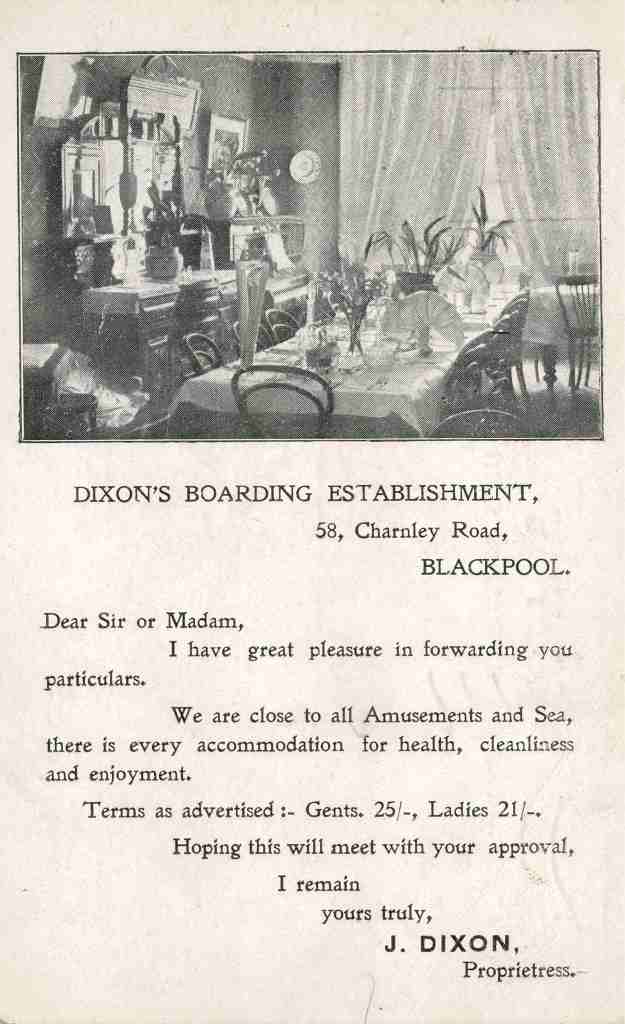
By 1915, 58 Charnley Road would be known as “Dixon’s Famous Boarding House”. It attracted families coming to Blackpool for a holiday, as well as those who needed a short-term place to stay while they were employed in the resort.

The Census of 1911 reveals that the boarding house had a staggering 22 rooms. It also states that four members of the Dixon family are living at the address – Thomas, Jane, and children Martha Jane and Florence. One of the Dickson children (Martha Jane) is also assisting in the business – previously she was employed as a baker’s assistant. Sadly, only a few months after the census was taken, Martha Jane passed away at the age of 26 due to acute appendicitis.

The Dixon family remained at 58 Charnley Road throughout WWI. However, not long after the war had ended, they sold the business to Jane and Charles Pyle.

Like the Dixon household, it would be the female of the Pyle family that would manage the boarding house. Although there may have been cosmetic changes inside the house, Jane Pyle decided to still trade under the name of ‘Dixon’s Famous Boarding House’. She remained at the boarding house for the next ten years, leaving in 1930 to take up a new position as the manager of a boarding house on Albert Road.
The next proprietor of 58 Charnley Road was Ellen ‘Nellie’ Challinor and her husband John Thomas Challinor, who went by his middle name of Tom. The couple had moved from Chelford Street in Manchester. One of the first significant decisions Ellen made, was to ditch the ‘Dixon’ brand and come up with a new name, which was ‘Progress House’. She also changed the tone of her newspaper adverts, gone are the ‘homely comforts’ that Jane Dixon promoted, Ellen thought the main selling point of the boarding house was its location, being only ‘two minutes from the station, promenade and Winter Gardens’. To attract custom, she kept her prices competitive, charging 7s 6d (approx £26.22 in today’s money) for men and 7s (approx £24.48 in today’s money) per night for women – the price included good food and ‘no extras’.
In 1939, Ellen’s husband, Thomas, sadly passed away. Every year on the anniversary of his death, Ellen took out a memorandum notice in the local paper, stating how much she loved and missed him.




The exact date when Ellen left 58 Charnley Road is not clear. She was still there in 1949, however, in 1960 a newspaper advert reveals the boarding house had new owners. The new owners had changed the name to the Bali-Hi Hotel. For the first time in its history, the hotel offered the guests such luxuries as a wardrobe in every room and a TV in the lounge.

From the 1960s onwards, visitor numbers began to slowly decline. This was in part due to the arrival of package holidays abroad to places such as the Mediterranean, where hot weather and sandy beaches were guaranteed. The demographic of those still visiting Blackpool also began to change. According to Brodie and Whitfield, in 1972, it was estimated that the majority of visitors to the resort were over 45 and were from lower social groups.
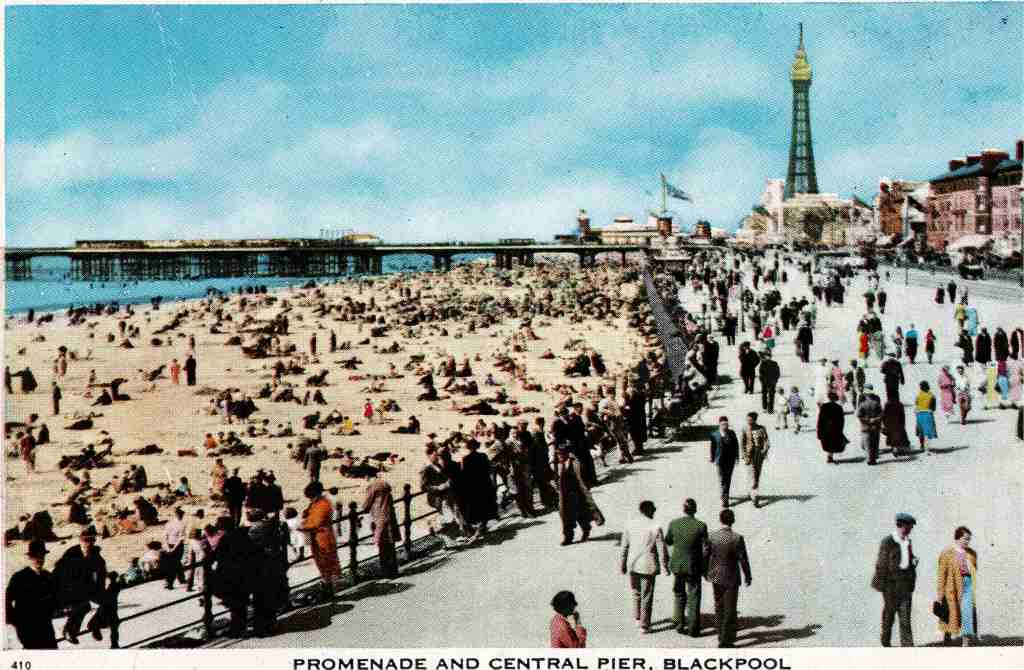
Today, the hotel is part of the Wilkinson Hotels group, who purchased 58-68 Charnley Road, combining them to form one hotel. Although the brickwork above the ground floor largely remains the same, the lime green paint and the alterations to the entrance makes the former boarding house almost unrecognisable.
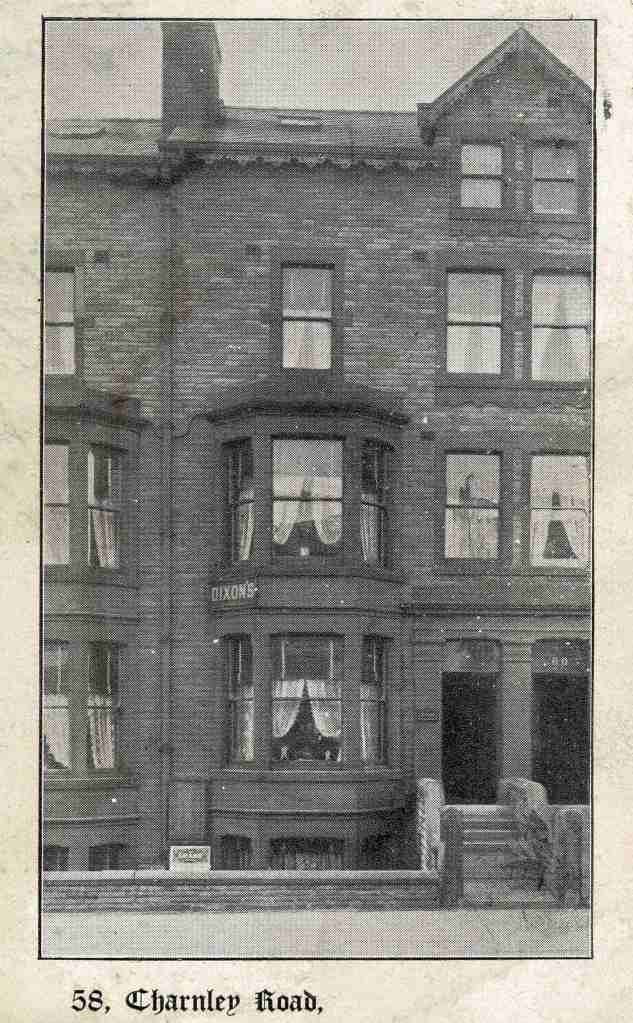
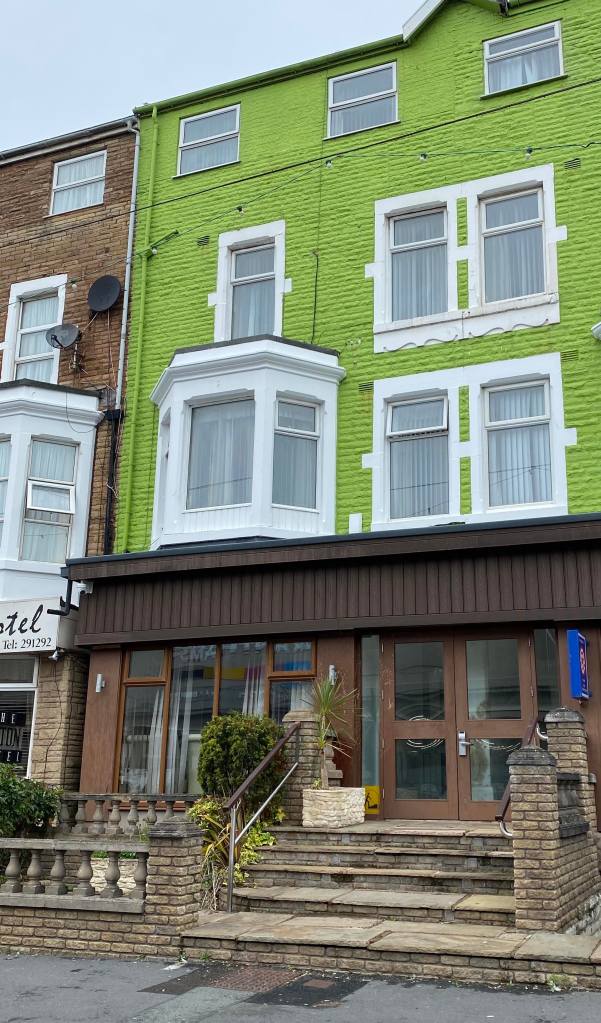
References
Allan Brodie, Matthew Whitfield, Blackpool’s Seaside Heritage, (Swindon: Historic England, 2014)
John K. Walton, The British Seaside: Holidays and resorts in the twentieth century, (Manchester: Manchester University Press, 2000)
Susan Barton, Working-class organisations and popular tourism, 1840-1970, (Manchester: Manchester University Press, 2005)

Another good read thanks K. Waiting for the next many thanks M mon artin
LikeLike
I believe I stayed there in 1973 when it was called Bali Hai…
LikeLiked by 1 person
I also stayed at the Bali Hai, It would have been in the mid 60’s with my Mam and Dad and elder Brother. I remember we had a lovely time with a nice landlady. We tried to book in again the next year but it was full! So disappointed! Thank for revivling such lovely teenage
memories Watching the recording of a Sunday radio programme with Reg Dixon on the “Mighty Wurlitzer organ” coming up from the floor! And reading “Billy’s Weekly Liar” so funny! Thank you once again. David.
LikeLike